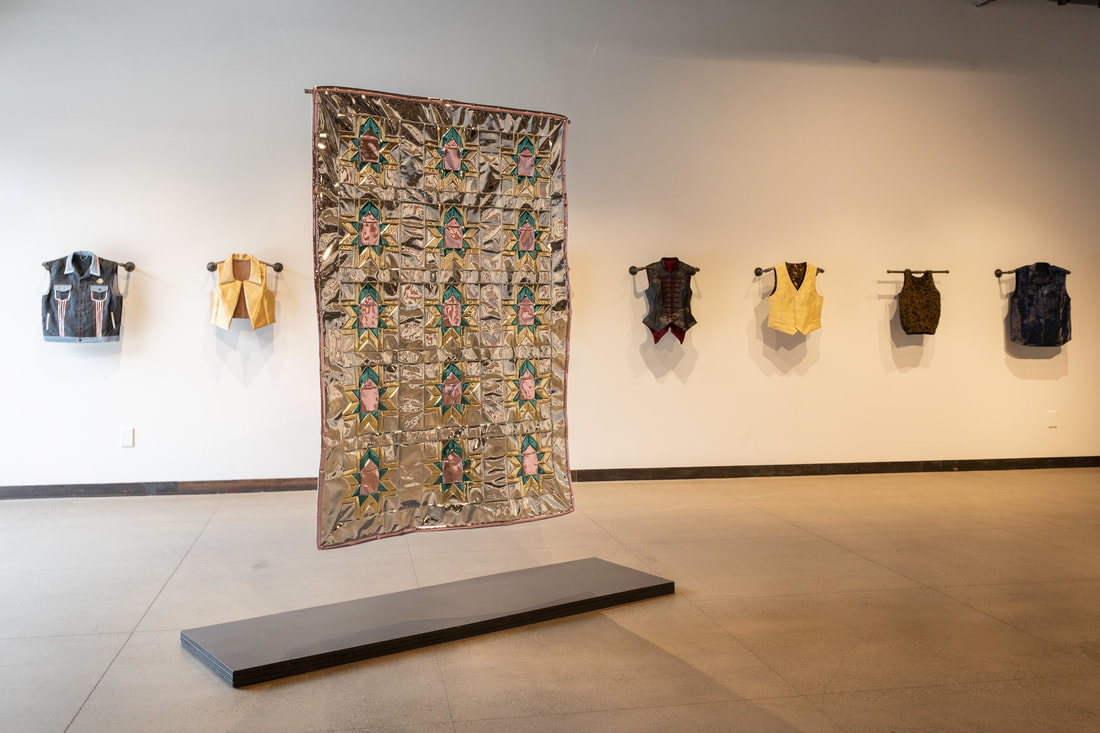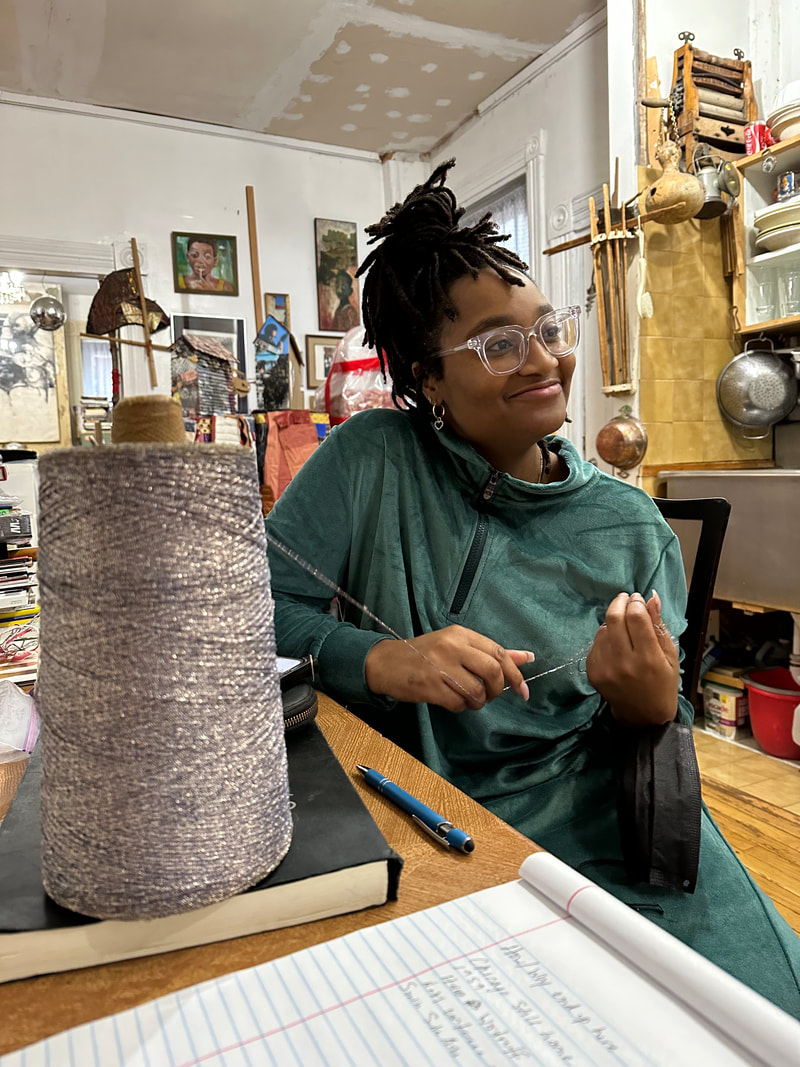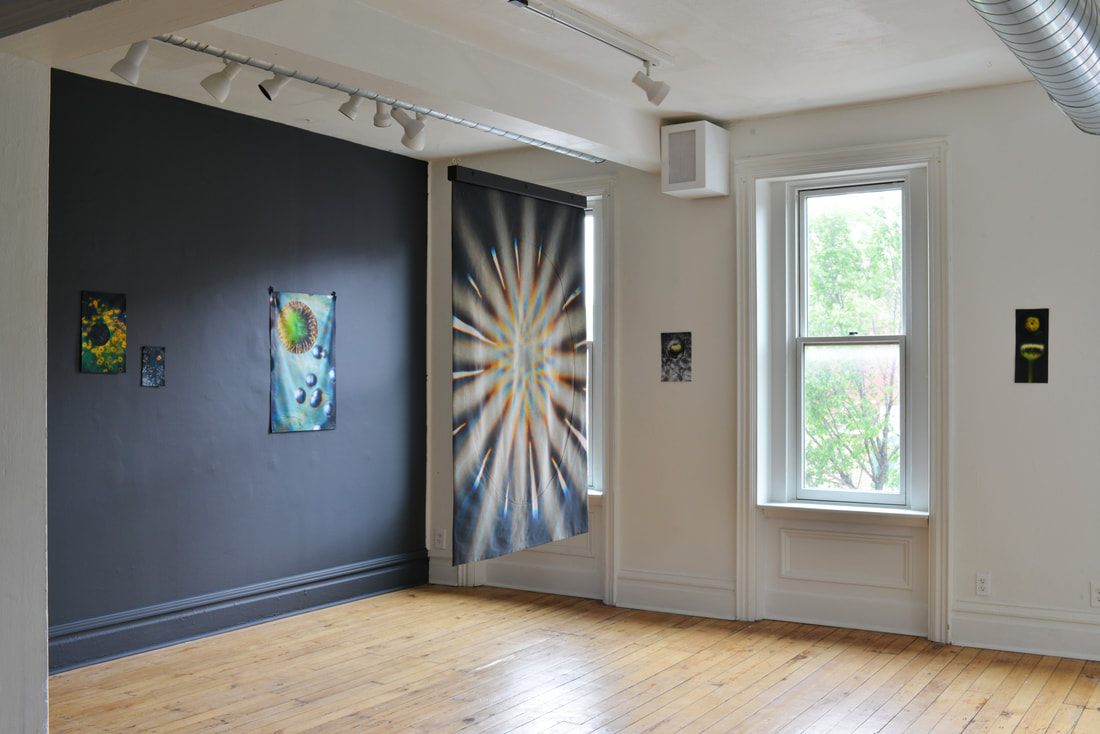3/1/23

Anne Chen at Bunker Projects
The views and opinions expressed in this article are solely those of the author. They do not reflect the opinions or views of Bunker Projects or its members. All images courtesy of Bunker Projects.
What do you mean by “material culture” and “bootleg”?
I mean the way objects have blurry values, and how context is very important. I always use the example of Antiques Roadshow; people will have an idea of how much an object is worth, and they’ll attach a story or details in it that create value in the object. The object is like Schrodinger’s Cat; it’s both the most expensive thing in the world and completely worthless. After an arbitrary appraisal of it, you open the box, and the cat, or the value, is either alive or dead. But until you open the box, it’s both, or everything in between. I’m interested in that intangible value. I’m also interested in the knockoffs of cultural artifacts that people make a lot of money with by just slapping a sticker on it; that’s what I mean by bootleg.
What is your opinion on attaching monetary value to artwork or cultural ideas?
I don’t want to judge anybody, but it’s interesting to see all the parts that construct that value. If a vase is sitting on the trash, that tells you something about it. But if it’s sitting in a museum, behind glass, with lights and a custom placard, it feels like it has to be important or special.
When Parasite (2019) and Uncut Gems (2019) came out, I was thinking, wow, those are some powerful rocks. At the beginning of Parasite, the son’s rich college friend brings him a rock, and he’s like oh, this is so metaphorical and venerable! He attaches so much meaning to it–when the house floods, it’s the only thing he carries out. But in the end of the movie, the rock ends up back in the stream. It was just a rock, but somebody went and saw it, attached values to it, custom carved a base for it… all that labor is inside the base and the custom box that was built to hold the rock. Everything is custom for the rock, which really just came from the earth. It’s all about the base and ideas, not the physical thing itself. I’m interested in all of those ideas that go around the object.
Could you speak a little about your cultural background?
I’m American-born Taiwanese. When my parents immigrated, they brought a lot of things over that served as a skin, as a home of their culture. They wallpapered everything with these… I get the same experience when I go to a Chinese restaurant – those things are my relationship to my culture. It’s like a fantasy of the place that’s brought over and then installed everywhere in funny little ways. I find myself moving through these multiple spaces; my mom will be talking to me in Chinese in the car on our way to school, but then we’ll stop at McDonald’s and switch languages. It’s how everything sort of seeps in.
Has your personal and cultural identity played a large role in what you engage with in art?
When I went to school, they [my instructors] really wanted to push me towards that. I was really resistant. I feel complicated about the time that we live in, and how we identify ourselves. It feels very intimate to have your identity being sold and on display all the time. It’s what people want to take from us. Even if it’s well-meaning with “representation!” and “your culture is so important, share it with us!” No, you wanted me to be invisible for so long, and now I’m not comfortable. Part of the whole bootleg, knockoff focus is my discomfort around that. But also, I’m sort of a “knockoff Chinese person.” I’m fully a real Chinese person, but also a mix of American and Chinese diasporic culture. I’m not the perfect representative you want me to be. I’m just an expert on this messy mistranslation.
How tangible do you think identity politics are in the art world, as well as other areas?
I think it’s everywhere. I do a lot of nonprofit work and teaching. Identity politics in art are really hot right now, and it does get exhausting. I need to resolve these complicated feelings before I can share them, and have them sold. When I sell my work, sometimes I feel relieved when I know it’s going to someone else who is also part of the same diaspora.
Do you think about how buyers of your work interpret it, and whether or not they associate the same values to it as you do?
Yes… I just don’t want it to be bought. I want it to be in the right place, the right hands. Yet, I can’t pass judgment on anybody. A lot of the objects in museums were stolen or made for tourism purposes. I’m interested in bootlegs and fakes as much as authenticity, and those two things always play off each other.
Do you think about how different people with different backgrounds attach different values onto objects?
Totally. As somebody part of a diaspora, I think about how we attach meaning to things and how we use objects to populate our spaces to remind us of, somewhere we’ve maybe never been, that we’ve never really lived in, but is something that’s told to us or is in our bones.
When you’re creating, do you intend your work to have a specific message or purpose? Or do you think in terms of creating for the sake of creating?
It depends. I definitely have control issues. When I started making things, I thought a lot about audiences. When my dad asked me to catalog his Chinese art collection, I was thinking about this. I was like, nah, no, not Chinese art. But I did catalog his art, and I used that to work through some stuff, while dealing with translation. When designing that project, I was dealing with a lot of sticky, icky feelings of how, oh, my advisors just want me to talk about being Chinese all the time. It was a good project in that it let me control what parts I wanted visible; I could control the opacity of each aspect of the project.
I released a line of work at Wing on Wo. I took objects from all the beautiful Asian art archives that popped up over COVID, that museums have been diligently created during this time. It’s been fun! I’ve been looking at all those objects and wondering, what was your journey? As I deal with those archives more and more, I’m thinking: why is that here? But when I see my work installed in a gallery, I feel really uncomfortable, because it’s just not right. There needs to be more density around my work.
When you say density, do you mean context?
The density provides context. I make a lot of home goods… How do you display a pillow? It’s supposed to be on a couch so you can touch it, and it needs to be speaking to all the things around it. I’ve been using this example of a ginseng jar I saw in a museum; I don’t want to just make or buy that ginseng jar and show it to you. I want to bring you to my grandma’s house and show you that ginseng jar that’s been sitting on her counter for 20 years, with the shadow of it burned into the back wall. And it sticks to the table when you lift it up and leaves a residue… I’m trying to create that place. Those objects [in museums] have been ripped away from where they’re from… and sometimes I feel like that object, you know? Those objects and their stressful journeys, that object is what I’m interested in.
Are you referring to the way many objects in museums have been ripped out of their context and placed elsewhere, in this case, a museum?
Out of context, yes, and there are long histories of theft and colonization. The reason why they’re in a museum is a product of a lot of bad things happening to a lot of people. But we don’t get to understand that history by looking at the object; that knowledge sits in that object. Maybe people that have been researching it or people that have handled it along the way know parts, but nobody has that full story. I want to talk to the object, find out what happened, ask, what did it see?
Do you think about how different people with different backgrounds attach different values onto objects?
Totally. As somebody who is part of a diaspora, I think about how we attach meaning to things and how we use objects to populate our spaces to remind us of, somewhere we’ve maybe never been, that we’ve never really lived in, but is something that’s told to us or is in our bones.
Would you say that people want you to be an expert in the Chinese aspect of your identity, rather than your whole identity?
Maybe not so explicitly? It may be a complex that I personally have. But due to current identity politics, there’s a lot of pressure out there to sell those parts of us.
Do you think it’s better for an object to have a false story than no story at all?
Maybe if the object is really good, if it’s technically or formally cool. But, when I’m looking through archives, I get that experience of having to make up my own story about it. As I do more and more research, things start to come into focus more, but who knows what’s true and what’s not? But also, who cares? We all have a lot of possessions. The things in our houses are museums to us, and our life. They tell a story about who you are and your values and experiences…
Do you think objects in museums need more background information, in order for people to better understand their context?
Wall text does a good job contextualizing things, but I don’t have solutions. But I’m also interested in the lies that come with those objects. That’s the best thing about Antiques Road Show; some people have incredibly tall tales, and it’s cool to use objects as a way of storytelling… true or false doesn’t matter, as long as it’s a good story.
How do your parents, or people within the diaspora from your parents’ generation, view your art?
I haven’t really shared a lot of it with them. I need to filter and control the opacity of what I think is important to them. My parents are a big part of my artwork, so I can’t share those parts with them. There’s a discomfort in using them in the process of making, and not knowing if they care to understand. Asian parents are really into achievement, or at least mine are. The names of certain institutions, or a dollar amount, that’s what they can identify as success. The little moments in my studio of something finally working is what success might mean to me, but success means different things. But maybe I should trust that they care more. But my parents didn’t come all the way to this country for me to make weird knockoffs of their stuff, so I have to hide that totally absurd thing that I’m doing. They worked really hard to provide the ability for me to do what I want, but they also wanted to control what it is I wanted. It’s all love and care, but different definitions of success.
Do you think your parents would view those practices with more importance if they hadn’t immigrated, since few people here in the US practice those rituals?
Maybe. Our culture is like a canned version of the original. We have a lot of recipes that we’ve taken shortcuts with. In a lot of Asian grocery stores, half the products are canned and now that’s become part of the recipe. We can’t get certain things fresh, so we’ve used the dried and canned options, so those foods have also transitioned into this new cultural identity, and the recipe almost doesn’t work without that specific spice pack or that specific dried mushroom. Back in the home country, they’re making it from scratch, and that’s the right way to make it. But here, the right way to make it is with that specific brand that everyone knows. That canned culture is how our parents had to do it since they immigrated. I don’t know what it’s like in Taiwan, but that’s my experience. Do you know about ‘hell money’?
What is ‘hell money?’
It’s paper money that you burn to send to your dead. But in Chinatown shops, there are cardboard cutouts that you can fold into cell phones, Rolex watches, to burn and send to your dead. It’s the craziest stuff. China has banned certain things being made into hell money to burn, what with the superstition. But it’s just funny, like, I need to burn this iPhone to send to my dead uncle. The Egyptians did the same thing. They buried you with everything that you need in your afterlife. The things that you take with you are really important, they say who you are.
Would this exemplify what you were saying about taking something, and commercializing it? How it used to be a ritual, but now it’s just a fun thing to spend money on, then burn?
I think that’s what happens when you have really old cultures; you’ll have this ritual that’s been done for a really long time, but over time, it becomes less venerated and more obligatory. My mom addresses superstitious things in our culture with an air of exhaustion. She’s been doing those superstitious rituals since she was a little girl, so she does them with a sense of getting them over with.
Anne Chen is a Taiwanese-American artist formerly based in Pittsburgh, PA. Her work endeavors to bring into the light the ancient histories and false narratives woven into objects. Her research explores how physical artifacts, whether stolen through colonization or having migrated in someone’s suitcase, carry unspoken values that can only be revealed through context, density of environment, and the attention of the interpreter. Her solo show, 偷偷摸摸 TŌUTŌU MŌMŌ, opens March 3rd at Bunker Projects and is on view through April 16th, 2023.
Alana Wu is student at Carnegie Mellon University in Pittsburgh, PA. She is majoring in Decision Science and Human-Computer Interaction, but loves to explore anything related to urbanism, public art, or the environment.


